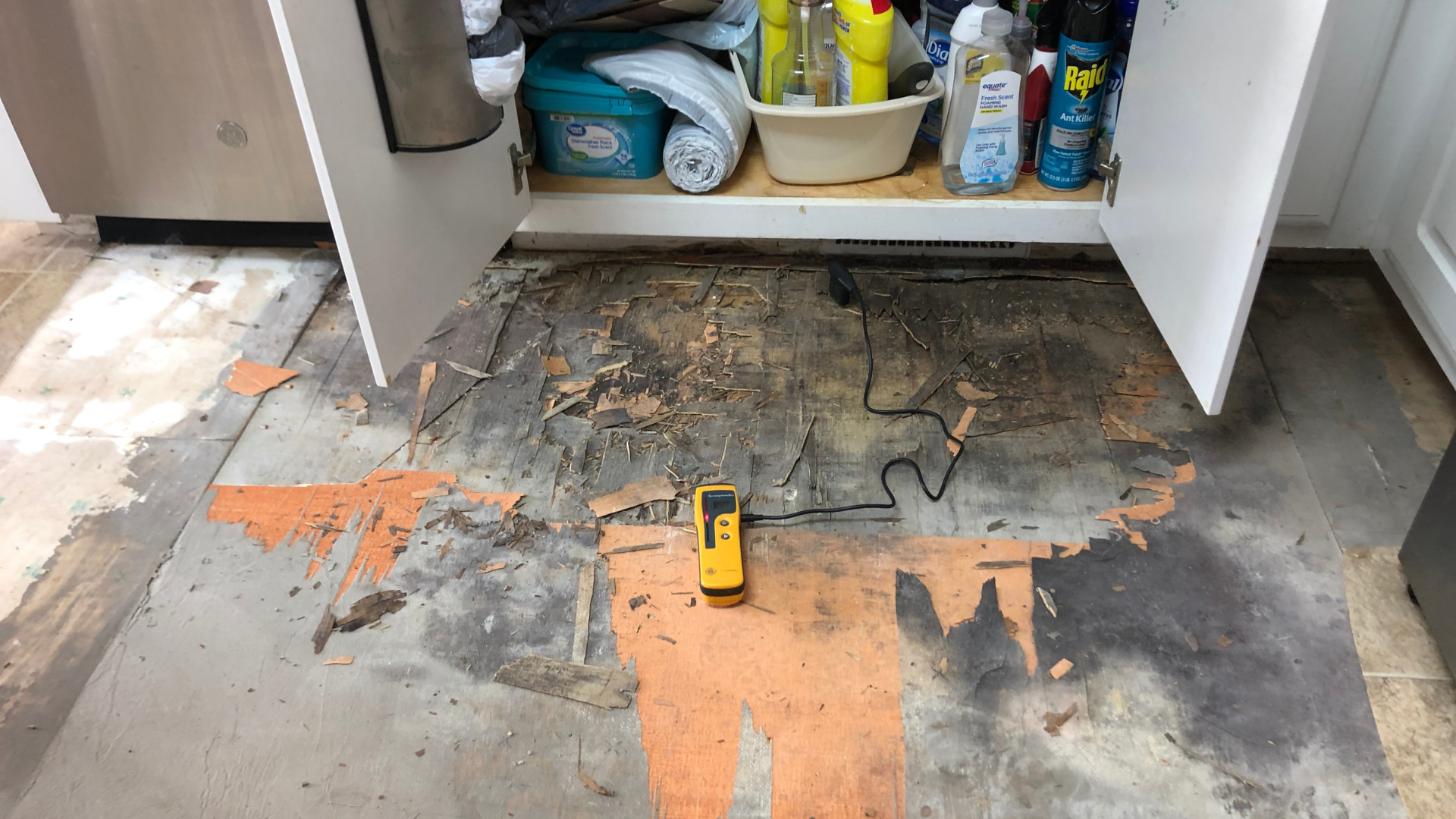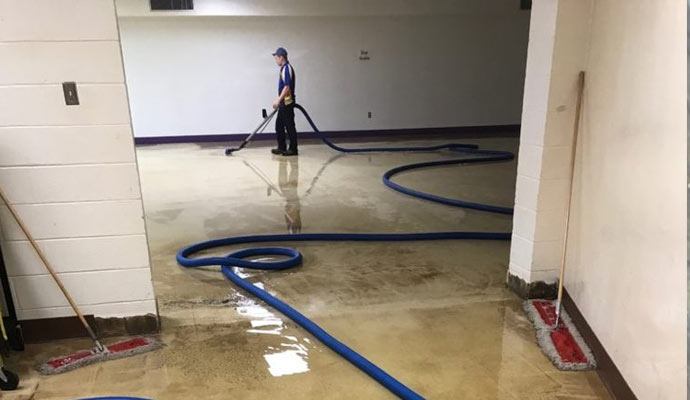Top Tips for Effective Water Damage Restoration: Protect Your Residential Property Today
Water damage can strike all of a sudden, triggering substantial disturbance and prospective hazards. Reliable restoration calls for a systematic approach to decrease further injury. From reviewing the damage to implementing preventative procedures, each step plays an essential role in protecting building. Recognizing these methods can make all the difference in the after-effects of a water-related crisis. What important activities should be focused on to ensure comprehensive defense?
Evaluate the Damage Quickly

Shut Off the Water System
Shutting down the water supply is a necessary action in avoiding additional damage during a water-related event. When a leak or flooding occurs, immediate action is crucial to reduce the degree of the damage. Finding the primary water shut-off shutoff ought to be a top priority. This valve is typically positioned near the water meter or where the water line gets in the property. Once located, turning the valve clockwise will stop the flow of water. In cases where the primary shutoff is unattainable, specific shut-off shutoffs for home appliances might likewise be utilized. Promptly shutting down the supply of water not just secures the residential or commercial property from extra injury yet likewise assists in the subsequent restoration procedure, guaranteeing that recovery efforts can start right away.
Eliminate Excess Water Promptly
Getting rid of excess water promptly is crucial for minimizing damage and stopping mold and mildew growth in impacted areas. The longer water continues to be touching products such as drywall, wood, and insulation, the greater the risk of structural damage and the development of mold and mildew. Homeowners ought to act quickly to evaluate the situation and utilize ideal devices, such as wet vacuums or pumps, to draw out standing water efficiently. If the quantity of water is substantial, speaking to expert restoration solutions may be needed, as they can supply specific tools and competence. Additionally, eliminating furnishings and belongings from the damaged area can aid to lower damage and facilitate the total restoration process. Prompt action not just protects residential or commercial property but additionally help in a smoother recovery trip.
Dry the Affected Location
After removing excess water, it is necessary to dry out the affected location thoroughly. This involves getting rid of any type of standing water and improving air blood circulation to promote evaporation. Efficient drying out will aid avoid mold growth and additional damage.
Get Rid Of Standing Water
Quickly addressing standing water is essential for effective water damage restoration. The existence of stagnant water can bring about further home damage and develop an environment helpful to mold growth. To minimize these dangers, it is vital to get rid of standing water as quickly as possible (Flood Cleanup Services). This process typically includes using submersible pumps, damp vacuum cleaners, or specialized removal tools. Experts advise examining the deepness and degree of the water prior to picking the proper approach for removal. Safety and security preventative measures must additionally be taken, including using protective gear and guaranteeing electricity is switched off in influenced areas. When the standing water is successfully removed, the drying procedure can start, better protecting the property from ongoing damage
Increase Air Flow

Inspect for Mold Growth
Mold and mildew development is a serious issue adhering to water damage, as it can bring about wellness issues and structural wear and tear. After any type of flooding or leakages, it is necessary to conduct a comprehensive evaluation of the impacted areas. This consists of monitoring surprise rooms such as behind wall surfaces, under carpetings, and in attics or basements where wetness may linger. Indicators of mold and mildew include a stuffy smell, staining on surfaces, or noticeable development. Residential property proprietors need to use protective gear when evaluating, as mold spores can posture wellness risks. Water Damage Restoration. If mold and mildew is spotted, it is essential to resolve it instantly, as delaying removal can worsen the issue and enhance the risk of serious wellness problems for passengers. Early intervention is key to efficient mold monitoring
Repair and Restore Broken Frameworks
When attending to water damage, it is necessary to very first assess the architectural integrity of the impacted locations (Water Damage Restoration). This analysis helps recognize possible threats and educates the essential repair strategies. Involving expert restoration solutions guarantees that the restoration procedure is carried out safely and successfully
Evaluate Structural Integrity First
Before launching any type of water damage restoration, it is important to assess the architectural stability of the damaged area. This examination helps recognize any compromised elements, such as walls, foundations, or beam of lights, which may present safety and security risks. Checking for indicators of warping, splitting, or mold and mildew development is critical, as these indications can expose underlying damage that requires instant focus. Furthermore, understanding the degree of the damage can assist restoration efforts and establish whether repairs are practical or if substitute is needed. It is necessary to document findings completely, as this details can be important for insurance coverage claims or future reference. Prioritizing structural analysis assurances that restoration initiatives proceed securely and effectively, eventually shielding the home and its passengers.

Usage Specialist Restoration Services
Making use of specialist restoration solutions is crucial for effectively fixing and restoring broken structures after water incidents. These specialists possess the essential training, tools, and experience to alleviate and assess water damage completely. They can identify surprise issues, such as mold and mildew development and structural weak points, that might not be immediately evident. Professional services additionally use innovative drying strategies and equipment, ensuring that all wetness is eliminated to stop further damage. In addition, they abide by market criteria and policies, making certain that the restoration process is risk-free and reliable. By engaging restoration professionals, residential property owners can speed up recuperation, minimize long-term damage, and eventually shield their financial investment - Water Damage Restoration. This proactive approach is vital in maintaining the integrity and safety and security of affected frameworks
Stop Future Water Damage
To efficiently prevent future water damage, house owners have to take on an aggressive strategy to repair and maintenance. Routine assessment of downspouts, roofs, and gutters is essential; clogged rain gutters can cause water overflow and roof covering leaks. Additionally, checking for leakages in pipes components and home appliances can ward off possible damage. Property owners ought to also consider installing sump pumps in cellars or low-lying areas to handle water build-up. Sealing cracks in foundations and making sure appropriate drain around the residential property are essential action in securing versus water intrusion. Preserving humidity degrees with dehumidifiers can protect against mold development. By applying these precautionary steps, homeowners can greatly lower the danger of water damage and protect their building for the long-term.
When a water damage event takes place, it is crucial to examine the damage promptly to reduce further concerns. Removing excess water without delay is important for decreasing damage and avoiding mold development in influenced areas. Quickly resolving standing water is essential for efficient water damage restoration. The visibility of stationary water can lead to additional property damage and develop a setting conducive to mold and mildew development. Before launching any type of water damage restoration, it is vital to analyze the architectural integrity of the affected location.